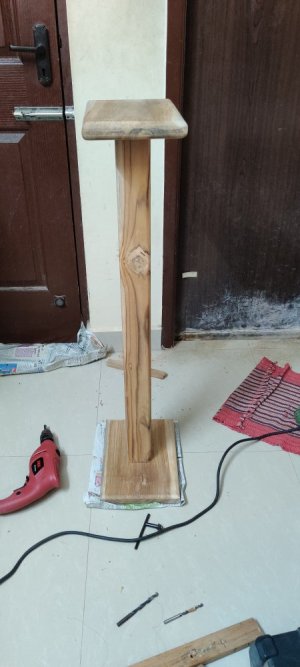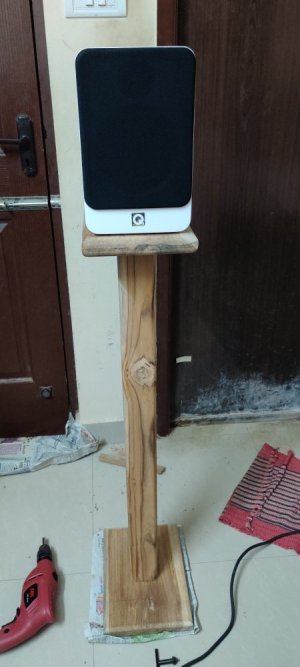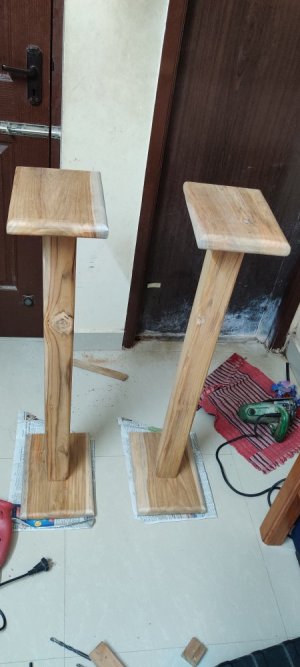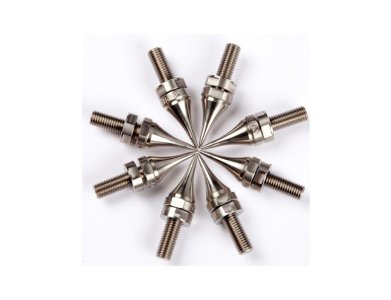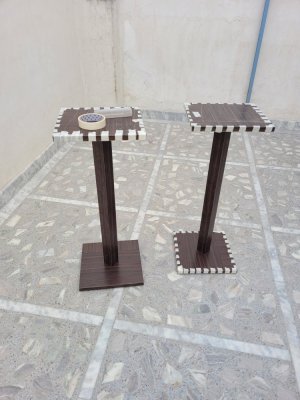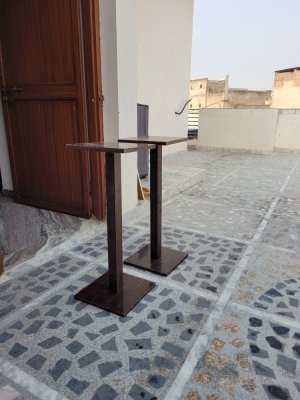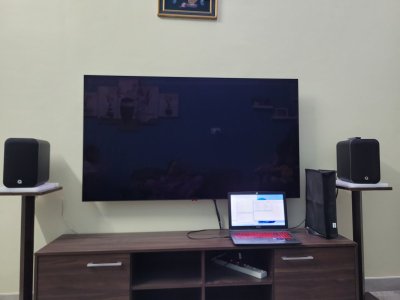Hey
@Subbiya, the aesthetics of solid wood is unmatched.
If it were me, I'd stain the wood black and give it a matte finish polish. I did the same with one of the tables I restored since most of the equipment is black.
Initially, I planned to build speaker stands with wood, but later switched to mild steel. I explored different types of wood like teak, Honne, and Sal, and received a quote around 5-6k for a 4*4 inch square column. However, for experimentation, I opted for cheap wooden poles used for scaffolding. While they are sturdy, they tend to crack radially. Through this experimentation, I learned that screws inserted laterally into wood don't hold well; they need to be perpendicular to the direction of the grains for a secure hold.
Upon considering the weight of professional speaker stands, which can exceed 15 kg per stand, I realized wood wouldn't suffice, so I switched to mild steel. However, for surround speakers, these stands should be more than adequate. As suggested by
@hifimaddy, adding a larger or thicker plank at the bottom can lower the center of gravity. In my speaker stand design, the bottom plates are double the thickness of the top plates and have a 50% larger area.
 I used D-Nut to mount the base plate and Top plate, so it can be removed anytime.
I used D-Nut to mount the base plate and Top plate, so it can be removed anytime.

